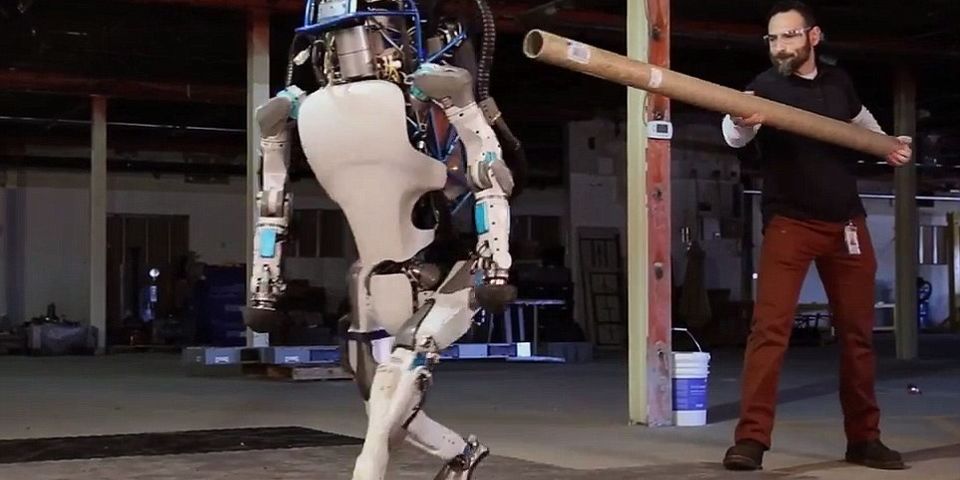Robots and Empathy

The complex relationship between humans and humanoid robots discussed in Tuesday’s post here on Posthuman Aesthetics is not just a hypothetical science fiction scenario. While robots with an aesthetic sensitivity or actual autonomous artificial intelligence are still only fiction, the inventions of modern robotics companies create very similar aesthetic and moral dilemmas to those explored in contemporary science fiction films.
In late February, Massachusetts-based robotics lab Boston Dynamics released a promotional video for the latest version of their anthropomorphic robot ATLAS on Youtube. In the video, the robot walks through a snow-covered forest while awkwardly adjusting its footing and balance to the terrain, which makes it look endearingly like a drunk human walking home late at night. Then, it lifts boxes onto shelves with stuttering, robot-like motions.
The truly uncanny moment in the video presentation occurs when Boston Dynamics showcases ATLAS’ balance and adaptability by letting one of the engineers shove the robot with a hockey stick repeatedly while the robot tries to lift a box. The combination of its awkward, yet human and childlike movements and the detached violence of the engineer (who shows no emotions and is clearly just manipulating a machine to show off its functions) creates an uncomfortable scene that elicits emotional reactions from viewers that are usually reserved for humans and animals. ow can one not instinctively feel sorry for the stumbling robot-person, or perhaps even feel a need to intervene? And, when the engineer knocks ATLAS over with a rod in the next scene and it lies on the floor for a moment before getting up, how can one not feel, at least at an instinctive level, that the rights of this machinic creation are being violated?
It is, of course, quite easy to understand where such reactions come from. The gestures of the robot remind us of helpless drunks and inexperienced children, even though we know that they are just the crude movements of a machine whose precision still has room for improvement. Many viewers will also see ATLAS through the lens of the many robot/A.I. science fantasies of Hollywood, like the ones we discussed in Tuesday’s post. But if we are able to feel empathy for robots just because they remind us of aspects of our own species, do we then need to dismiss that empathy because they aren’t “really” human?
It might be possible to imagine that humans living in a future with much greater automation and robot integration than our present might need to fundamentally decide whether they want to see robots as “beings” worthy of not just our anxiety or anticipation, but the entire human spectrum of interrelational emotions. Robots such as ATLAS make it clear that our attitude towards robots is governed not only (or perhaps not even primarily) by how “human” they seem in Turing test-like terms of intelligence and personality, but also in their physical mannerisms and gestures The posthuman in its robotic form is as much about presence in physical space as it is about artificial intelligence.
